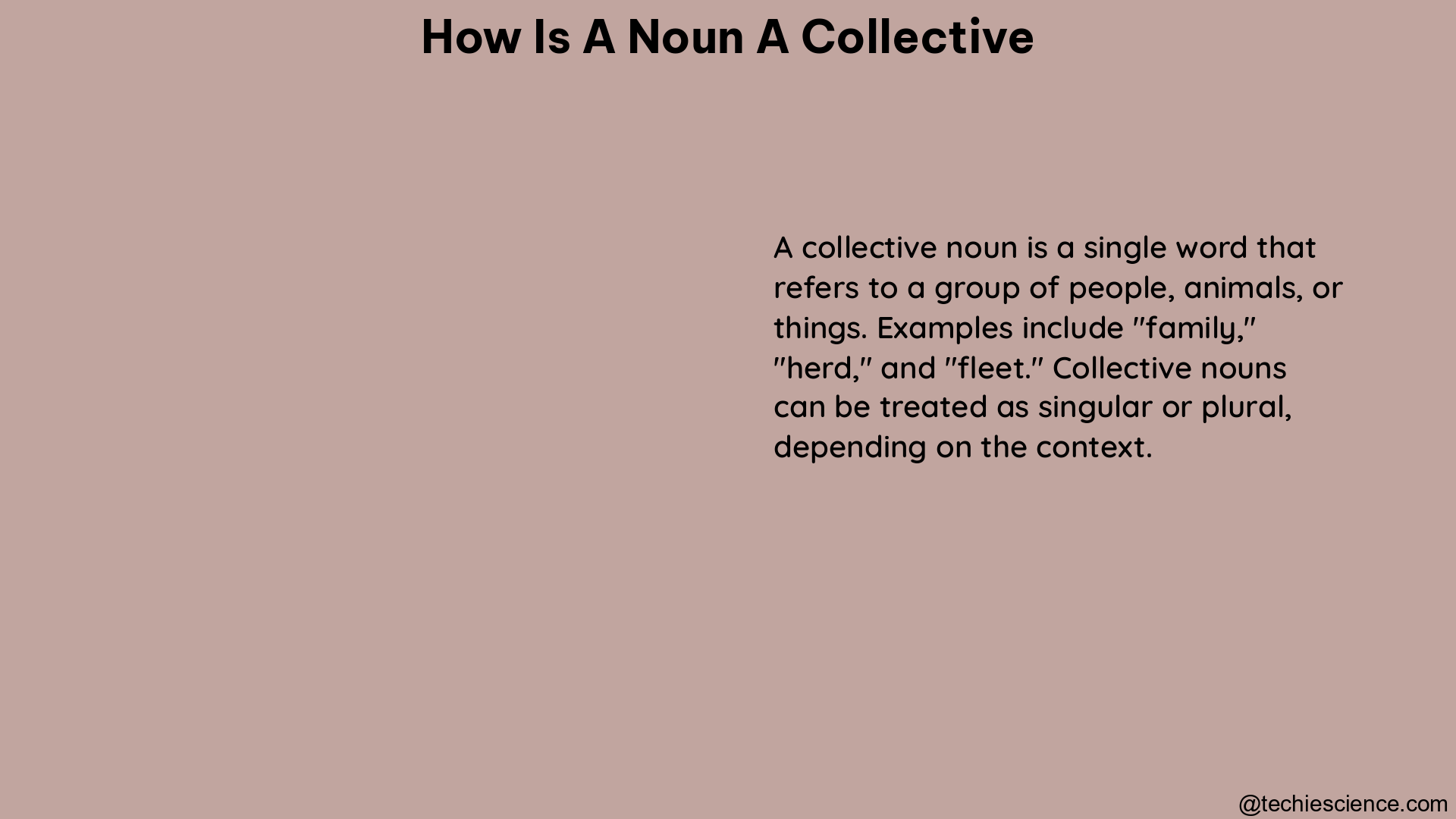A collective noun is a unique type of noun that refers to a group of people, animals, or things. These nouns are always expressed in the singular form but can be used to describe a plural entity. Understanding the intricacies of collective nouns is crucial for effective communication and proper grammar usage.
Definition and Examples of Collective Nouns
Definition
A collective noun is a noun that represents a group of individuals or items as a single unit. These nouns are singular in form but can refer to multiple entities.
Examples of Collective Nouns
Collective nouns can be categorized based on the type of group they represent:
People
- Team, family, staff, class, band, jury, council, army, choir, etc.
Animals
- Herd (cattle), flock (birds), pack (wolves), pride (lions), school (fish), etc.
Things
- Library (books), closet (clothing), batch (cookies), basket (apples), bowl (rice), pack (gum), etc.
Grammatical Specification of Collective Nouns

Singular Form
Collective nouns are always expressed in the singular form, even though they refer to multiple entities. For example, “the team” or “the herd” are singular collective nouns.
Verb Agreement
Typically, collective nouns are used with singular verbs, as they represent a single unit. However, they can also be used with plural verbs if the individuals in the group are acting separately or independently.
Example:
– Singular verb: The team is leaving tomorrow at noon.
– Plural verb: The team are all wearing their uniforms.
Pronoun Agreement
Pronouns referring to collective nouns should agree in number with the noun and the verb. If the collective noun is used with a singular verb, the pronoun should be singular (it, its). If the collective noun is used with a plural verb, the pronoun should be plural (they, their).
Example:
– Singular pronoun: The family is eating dinner together. It is a close-knit group.
– Plural pronoun: The family are all doing different things. They are independent individuals.
Advanced Details on Collective Nouns
Contextual Usage
The verb and pronoun agreement with collective nouns can vary depending on the context. If the group is acting together as a single unit, a singular verb is typically used. However, if the individuals in the group are acting separately, a plural verb may be more appropriate.
Example:
– The family is eating dinner together. (Singular verb, group acting as a unit)
– The family members are all doing different things. (Plural verb, individuals acting separately)
Consistency
It is essential to be consistent in the usage of collective nouns throughout a piece of writing to avoid confusion. Switching between singular and plural verb forms or pronouns can make the text unclear and difficult to understand.
Examples of Collective Nouns in Sentences
- Singular Verb:
- The team is leaving tomorrow at noon.
- The herd of cattle is grazing in the field.
-
The library has a vast collection of books.
-
Plural Verb:
- The team are all wearing their uniforms.
- The flock of birds are flying in a V-formation.
-
The closet is full of different types of clothing.
-
Contextual Usage:
- The family is eating dinner together. (Singular verb, group acting as a unit)
- The family members are all doing different things. (Plural verb, individuals acting separately)
Reference
- What Are Collective Nouns?
- Collective Nouns: Definition, Examples, and Rules
- Collective Nouns: Definition, Examples, and Grammar Rules
- Collective Nouns: What They Are and How to Use Them

Hi…..I’m a graduate with a Bachelor’s degree in English Literature. I wish to do a Masters in the same field someday and continue my career in Academia.
Let’s connect through LinkedIn: